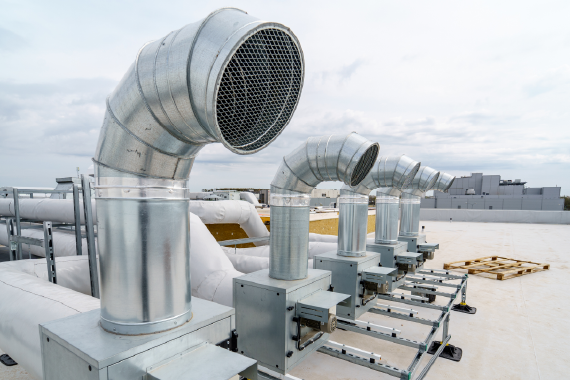We collaborate to achieve sustainable success
Get in touch with usHow regional F-Gas regulations share a unified market
The global F-Gas market in mid-2025 is at a critical juncture, heavily influenced by varied yet ambitious regional regulations aimed at phasing down high Global Warming Potential (GWP) refrigerants. While the overarching goal of reducing F-gas emissions is unified across major economies like the EU, UK, and US, the specific timelines, GWP limits, and product bans present a complex regulatory landscape. This divergence necessitates nuanced, region-specific strategies for multinational companies and significantly impacts global manufacturing and supply chains.
Differing Regulatory Timelines and Specific Requirements
The European Union's F-Gas Regulation (EU 2024/573) has implemented an aggressive phase-out, capping HFC production rights at 60% of the 2011-2013 baseline from January 1, 2025. This regulation also bans placing high-GWP products like commercial refrigerators and freezers with GWP ≥ 150 on the market from the same date. Additionally, "single split" AC systems with less than 3kg of refrigerant and a GWP over 750 are prohibited from 2025, and servicing existing systems with HFCs over 2,500 GWP is banned unless recycled or reclaimed gas is used.
The UK, despite its departure from the EU, largely mirrors the EU's F-Gas regulatory ambitions. From January 1, 2025, new split systems under 3kg charge cannot use refrigerants with a GWP over 750 (e.g., R-410A), and servicing existing systems with HFCs over 2,500 GWP is banned unless recycled/reclaimed gas is used. This alignment means UK businesses face comparable market disruptions and supply constraints as their EU counterparts.
In the United States, the American Innovation and Manufacturing (AIM) Act is driving the domestic HFC phase-down. A key change effective January 2025 is the requirement that new air conditioning units must use refrigerants with a GWP of 700 or less, effectively prohibiting R-410A in new HVAC systems. The U.S. EPA also issued 2025 HFC allowance allocations for production and consumption on October 1, 2024.
Influence on Global Manufacturing and Supply Chains
These varied regional regulations create significant challenges for multinational companies. A uniform global approach to refrigerant transition is insufficient, necessitating region-specific product development and compliance strategies. The EU's aggressive HFC production caps are poised to create a severe structural deficit for virgin HFC supply, compelling rapid market adaptation, driving up prices, and increasing the imperative for businesses to seek reclaimed or recycled refrigerants. The inclusion of Metered Dose Inhalers (MDIs) in the EU quota system from 2025 further broadens regulatory scope and could intensify overall demand pressure on the diminishing HFC quota.
The tightening supply and rising prices of F-gases globally create a strong incentive for illegal trade, which undermines regulatory efforts and poses safety risks. This further complicates supply chain management and fair competition for compliant businesses. Manufacturers are responding by proactively investing in research and development and new production capacities to lead the transition to sustainable cooling technologies, focusing on diversified low-GWP refrigerant portfolios and enhanced energy efficiency.
Emergence of De Facto Global Benchmarks
The US EPA's imposition of a 700 GWP limit for new air conditioning units from January 2025 has the potential to become a de facto global benchmark for residential and light commercial HVAC equipment. Given the substantial size and influence of the US HVAC market, this specific, quantifiable target could lead manufacturers worldwide to standardize their low-GWP product lines around this threshold, even in regions without explicit, equivalent regulations. This could accelerate global research and development efforts and market offerings towards this specific GWP target.
Furthermore, US regulations are not solely focused on GWP reduction but also mandate stricter energy efficiency standards for HVAC systems. This creates a dual challenge and opportunity for manufacturers, driving a broader wave of technological advancement in HVAC system design that leads to products offering both reduced climate impact and lower energy consumption.
Challenges for Multinational Companies
Multinational companies face significant challenges in navigating this complex regulatory environment. The incompatibility of many existing HVAC systems with the new generation of refrigerants presents a substantial operational and financial challenge, creating a "retrofit vs. replace" dilemma. This requires careful strategic decisions regarding capital expenditure and operational planning. The shift to mildly flammable (A2L) refrigerants like R-32 and R-454B necessitates new safety protocols, updated technician training, and potentially higher initial installation costs. Overly restrictive safety standards can impede broader adoption of these alternatives.
The emergence of specialized third-party providers offering "compliance-as-a-service," such as AFS Cooling, highlights the increasing difficulty for businesses to manage these complexities internally. These providers offer expertise in quota management, procurement, compliance, and logistics, becoming crucial partners in navigating volatile market conditions and ensuring uninterrupted business operations. The increasing stringency of regulations and the inherent complexity of the market also necessitate digital tools for efficiency, transparency, and robust regulatory adherence, underscoring a broader digital transformation within the F-Gas market.
In conclusion, the interplay of diverse regional F-Gas regulations is profoundly shaping the global market, driving innovation and demanding strategic adaptation from multinational companies. While specific regional requirements create complexities, the potential for certain standards, such as the US GWP 700 limit, to become de facto global benchmarks offers a pathway towards some level of standardization in product development.

